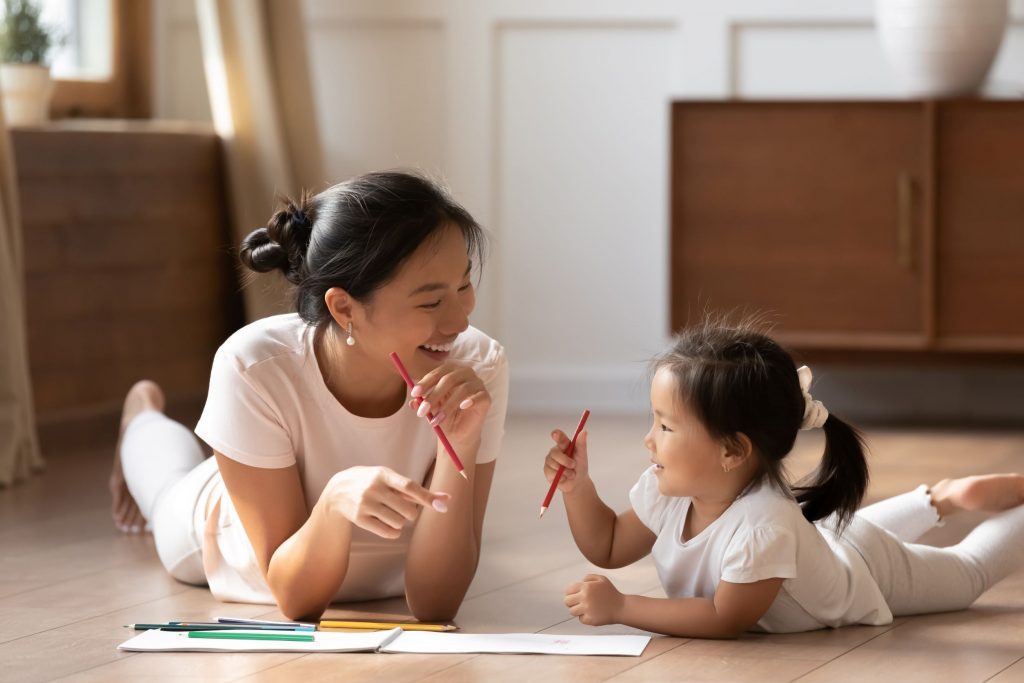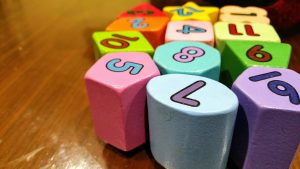By Karissa Arce
QUESTIONS WITH (BARELY) ANSWERS – How to effectively ask children questions?
I often get this from parents:
“Ysa, how come when I ask my child what they did in school today, they will just say they were playing? I want them to tell me more, but they are not giving me any answer aside from that.”
Not going to lie, I know how frustrating this is because I also experienced this when I was at the beginning of my teaching career. And I still get to experience this occasionally except whenever this happens, I don’t get frustrated anymore.
It is nice to see that some parents are eager to know about their child’s day so that they take the time to ask them questions or ask them to tell a story that happened in school. There are some children who can easily share stories and there are some children who find it challenging to share their thoughts. Our job as an adult is to help them scaffold those thoughts and give them some cue words to help them start sharing the sharing process.
Here are some tips that you might want to take note of if you when it comes to asking questions:
Learn to be SPECIFIC
A question such as “How was your day?” or “What did you do in school today?” are too broad. Even for some adults when they are asked “How are you?” it can be a little bit difficult to answer because sometimes you don’t know what to actually say, so most of the time, you go with the safest answer – “I’m okay.’”
It’s the same thing when it comes to children. It takes them time to pick a specific story to tell you and in return they will usually respond with “I just played” or sometimes “I don’t know.”
So instead of asking those questions, try making it more specific or direct. Direct or specific questions help narrow down their thinking process. This will help them give a more conclusive answer. Here are some examples:
Who did you sit with today during circle time?
What did you eat for snacks?
What toy did you play at the construction center today?
Who did you play with today?
I saw you made some peanut butter and jelly sandwiches earlier for cookery class, can you teach me how to do it?
When you make your questions more specific, you will get a better answer from your child. By doing this, you are also modeling to your child how to ask questions that can provide you with more detailed information.
Listen to your child’s response
It is one thing to ask questions and it’s another thing to listen to the answers being given. If you want to create a continuous flow of conversation with your child, you have to listen to what they are saying. The answers that they will give will help you control the exchange of information by giving follow up questions.
Mom: Hi Rey! Ysa sent me some pictures today of you making peanut butter and jelly sandwiches. Looks really yummy! How many did you make?
Rey: Just one
Mom: Was it a big sandwich at least?
Rey: It was this small (showing hand gesture)
Mom: I see, I want to learn how to make that too! Can you teach me how to do it?
Rey: Okaaay, but we have to buy bread and the red thing. Can we also make one for RJ?
Listening to their response and giving follow up questions from their response shows interest and it also teaches them to keep their focus on the topic being discussed.
Try not to over ask
“You know Ysa, my mom is like my cousin’s parrot. Always asking questions.”
I kid you not, I imagined her mom as a parrot. Talking to her and her brother while they try to tell her to stop. It was kind of hilarious in my head.
We do have to keep in mind that as much as we want to ask our child questions so we will know everything that they did while in school, we have to know also when to stop and not bombard them (even adults feel this too!) otherwise they will also get tired from talking to us.
Model the behavior
A good way to develop this kind of habit is to model it to your child. Tell something that you did that day EVEN IF they did not ask you. A simple story will do. This will give them an idea on how to share something that happened during the day. As simple as you going to the grocery and you saw some juicy apples or while you were walking outside you saw the neighbor’s dog, you called their grandma and asked her how she was doing. Modeling the behavior will help them understand what it means to tell a story.
Acknowledge the action
Acknowledging the action of responding and sharing are important. It shows them what good things they did and that your expectations were met. Remember, when you are acknowledging a behavior or an action, you have to make it specific as well. I cannot stress this enough – focus on the action. This will help the child understand better what they did rather than just saying “thank you” or “you did a good job.” You can say these things instead:
Thank you for telling me a story.
I appreciate that you answered my questions.
I appreciate the sharing that you did. I enjoyed listening to you.
When we ask specific questions, this helps the child to gain focus on certain things. It helps them shift their attention and in return give you a more thought of response. This will also help you get less frustrated whenever you try to connect with your child. It might be a little tricky at the beginning because you also have to get the hang of this. My advice is, do not just apply this to your child but also to everyone that you interact with, and I swear you’ll see a big difference with the communication. You got this! ☺




